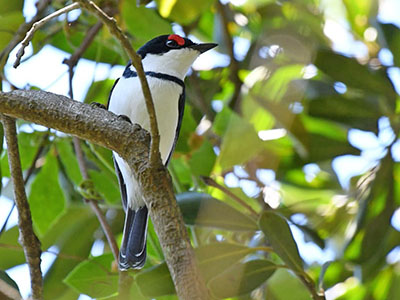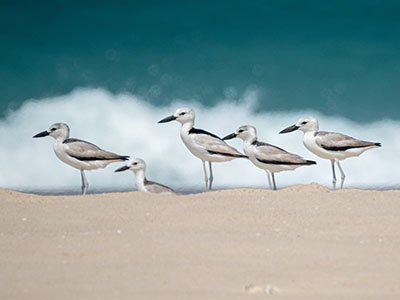SA Rare Bird News Report - 04 October 2021
Trevor Hardaker
| |||||||||
| |||||||||
S O U T H E R N A F R I C A N R A R E B I R D N E W S R E P O R T | |||||||||
|
|
| |||||||
This is the Southern African Rare Bird News Report issued at 18h00 on Monday, 04 October 2021.
Information has been gleaned from various websites, email groups as well as from individual observers who have passed on their sightings. This report cannot be taken as being totally comprehensive as it is based only on information made available at the time of writing. All bird sightings reported here are reported in good faith based on information as provided by the observers. Any inaccuracies are totally unintentional and the writer cannot be held liable for these.
None of the records included in this report have undergone any adjudication process with any of the subregion’s Rarities Committees, so inclusion in this report does not constitute any official confirmation of the particular record. Observers are still encouraged to make the necessary submissions accordingly.
For those who may have only joined the group recently and are interested in finding out what has been seen in the past, previous reports can be viewed at http://groups.google.co.za/group/sa-rarebirdnews |
| SARBN is proud to be associated with the following brands: | |||||||
| |||||||||
| |||||||||
| |||||||||
|
|
| |||||||
| |||||||||
|
| ||||||||
PLEASE CONSIDER FOLLOWING ME ON SOCIAL MEDIA BY CLICKING ON THE LINKED ICONS BELOW: | |||||||||
|
| ||||||||
|
| ||||||||
| |||||||||
|
| ||||||||
Starting in the Western Cape, the long-staying RED-NECKED PHALAROPE was still at Kliphoek Salt Pans in Velddrif yesterday while, over in the north-east of the province, 2 LONG-TAILED PARADISE WHYDAHS were seen south of Murraysburg at -32.235, 23.642 on Saturday.
In the Eastern Cape, no fewer than 3 BLACK-THROATED WATTLE-EYES were still around Riverside Lodge in Mkambati Nature Reserve on Saturday. | |||||||||
|
| ||||||||
|
| ||||||||
Red-necked Phalarope in Velddrif © Daryl de Beer | Black-throated Wattle-eye at Riverside Lodge © Foden Saunders | ||||||||
|
| ||||||||
Gauteng delivered an immature LESSER BLACK-BACKED GULL seen at Eagle Canyon Golf Estate in Honeydew, Johannesburg, yesterday afternoon but unfortunately, despite a number of birders searching for it today, it could not be relocated.
Mpumalanga had plenty on offer over the last few days with Mkhombo Dam producing 2 WHITE-FRONTED PLOVERS at -25.121, 28.876 yesterday while there were also at least 20 COLLARED PRATINCOLES in the same general area. The Kruger National Park also got in on the action turning up a single SANDERLING at Shitlhave Dam yesterday, a very exciting record for the park, while there were also still AFRICAN SKIMMERS around with 2 birds still at the Olifants River bridge on Saturday and another 2 birds still present at the Malelane bridge on the Crocodile River until at least Friday. | |||||||||
|
| ||||||||
|
| ||||||||
Sanderling at Shitlhave Dam © Simon Vegter | African Skimmer at the Olifants River bridge © Arnold van Zyl | ||||||||
|
| ||||||||
Across in the North-west Province, a EUROPEAN HONEY BUZZARD was reported at Stilfontein Pan on Saturday.
Neighbouring Limpopo produced a group of 20 or more GREAT WHITE PELICANS seen flying over Crooks Corner near Pafuri in the Kruger National Park this morning while the GREEN SANDPIPER was seen again at Polokwane Game Reserve at -23.958, 29.479 on both Friday and Saturday.
Up in Namibia, the mega ROSS’S TURACO was still at Taranga Safari Lodge, west of Rundu, on Saturday. | |||||||||
|
| ||||||||
|
| ||||||||
Green Sandpiper at Polokwane Game Reserve © Craig Widdows | Ross’s Turaco at Taranga Safari Lodge © Rupert Horley | ||||||||
|
| ||||||||
Over in Zimbabwe, a COMMON RINGED PLOVER was reported at Marlborough Sewage Ponds in Harare on Friday.
And finally, in Mozambique, there was also still more than enough to keep birders entertained. A few unidentified FRIGATEBIRDS were seen out at sea east of the lighthouse on Bazaruto on Friday while another group of 5 FRIGATEBIRDS (also not identified to species level) were reported on the San Sebastian Peninsula yesterday. The Sanctuary area on the San Sebastian Peninsula also still held on to several SAUNDERS’S TERNS and no fewer than 60 CRAB PLOVERS on Saturday as well. | |||||||||
|
| ||||||||
|
| ||||||||
Saunders’s Tern on the San Sebastian Peninsula © Diane McLean | Saunders’s Tern on the San Sebastian Peninsula © Albert McLean | ||||||||
|
| ||||||||
|
| ||||||||
Crab Plovers on the San Sebastian Peninsula © Diane McLean | Crab Plovers on the San Sebastian Peninsula © Albert McLean | ||||||||
|
| ||||||||
Thank you to all observers who have contributed their records. Please continue to send through any reports of odd birds as well as continued updates on the presence of rarities already previously reported, no matter how mundane you think they may be. Even if you think someone else has probably sent in a report, rather send the report yourself as well. The only way to improve this service and to make it as useful as possible to everyone is if it can be as comprehensive as possible.
Kind regards Trevor | |||||||||
| |||||||||
TREVOR HARDAKER Cape Town, South Africa |
|
|
|
| |||||
| |||||||||
| |||||||||
| |||||||||
















